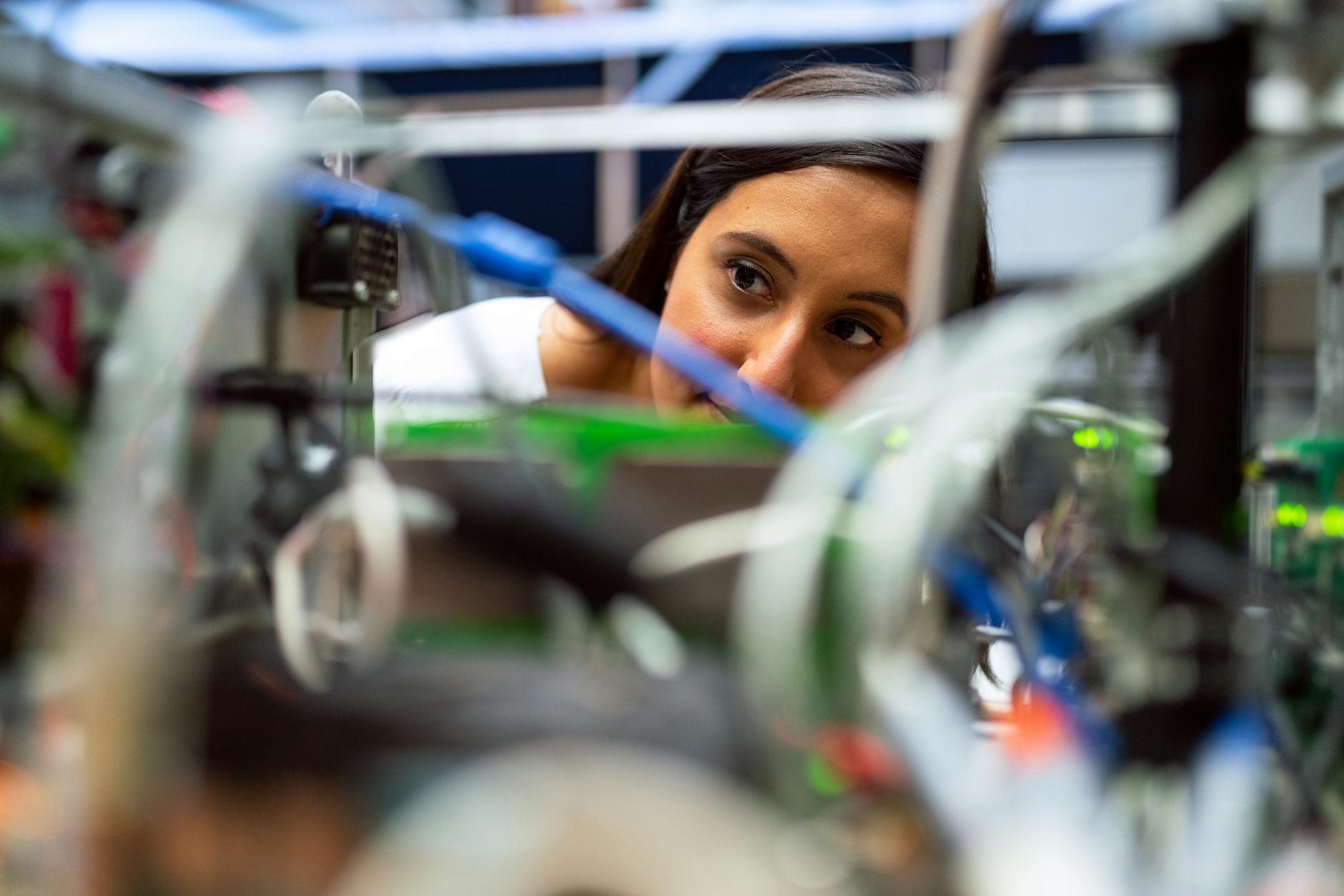Are You Using the Best AV Strategies for Events in Australia?

Assessing Current AV Strategies
In making a classroom more accessible, I recommend evaluating the existing audio-visual (AV) setup comprehensively. This assessment allows us to understand our strengths and identify areas for improvement. One of the tools worth exploring is the recording microphone. It’s essential to have a microphone system that records sound clearly, capturing critical classroom interactions, especially for students who rely on assistive listening devices.
Evaluating Your Setup
It's crucial to begin by examining the current AV equipment with a focus on inclusivity. Assess if the present configuration supports all students, particularly those with special hearing needs. This includes evaluating the quality of sound transmission and microphone coverage throughout the room.
Identifying Key Components
Next, make a checklist of necessary AV components integral to an inclusive and effective classroom. This should include a hearing loop system, which can enhance audio clarity for students using hearing aids, and ensure that microphones and speakers are working optimally.
Determining Effectiveness
Finally, test the effectiveness of the entire AV setup in a live classroom environment; feedback from students can be invaluable. By observing how well students with impairments engage in lessons with the current setup, and adjusting accordingly, we can ensure everyone benefits equally. As you refine your strategy, think about iconic spaces like the Sydney Opera House, where precision and clarity in AV setups make landmark events memorable.
Enhancing Sound Quality for All
Implementing Hearing Loops
Understanding the nuances of sound technology can significantly impact how effectively classrooms accommodate students with hearing impairments. In the vibrant setting of the International Convention Centre Sydney (ICC), enhancing audio systems is crucial to maintaining clarity and engagement. When implementing hearing loops, it’s essential to choose the right system that seamlessly integrates with your existing audio setup. This ensures that students experience clear sound transmission directly to their hearing aids, minimising distortion. Additionally, consider the layout of your classroom and how the positioning of AV components like av cables affects the sound quality. Proper cable management prevents interference and maintains signal integrity.
Optimizing Speaker Placement
Strategic speaker placement can drastically improve the distribution of sound across a room. Begin by evaluating the dimensions of your space to determine the most effective locations for your speakers. Try to position them at an appropriate height to avoid obstacles that might block sound waves and ensure even coverage throughout the classroom. The right setup might resemble the intricate planning required for large events at the motorised projector screen, making sound across a venue uniform and engaging.
Reducing Background Noise
Minimising background noise can create a conducive learning environment, much like ensuring silence in the majestic halls of the Sydney Opera House for a flawless performance. Sound-absorbing materials can be key in reducing echo and ambient noise, which in turn enhances students' ability to focus on instructional content. Consider using carpets, curtains, and acoustic panels to mitigate unwanted noise, ensuring that audio-visual aids function at their best for inclusive education.
Visual Technologies in Education
Choosing Projector Screens
When selecting projector screens for your classroom, consider the size and layout of your space. A motorised screen ensures smooth operation, particularly useful when multiple types of displays are used throughout the day. Pay attention to the aspect ratio that best fits your room dimensions and projector capabilities. High-gain screens that enhance brightness and clarity can improve visibility, making lessons more engaging for all students, especially those seated further away. Incorporating audio equipment with your projector setup can further elevate the educational experience.
Integrating Interactive Displays
Interactive displays transform traditional lessons into interactive learning experiences. When planning to integrate these displays, evaluate the needs of your students to ensure optimal usability. Choose displays that support multi-touch capabilities to allow simultaneous student interactions and accommodate diverse learning styles. This active engagement in the classroom can make a significant impact, mirroring the vibrant atmosphere you'd expect at Sydney's Darling Harbour. For classrooms with limited space, wall-mounted options offer practicality without sacrificing functionality.
Ensuring Visibility for All
Positioning your visual technologies strategically is key to ensuring all students have clear visibility. Consider the sightlines from all angles and make necessary adjustments to seating arrangements or display heights to eliminate obstructions. Classroom lighting can also play a role; utilising matte screens can reduce glare, enhancing the viewing experience. Ultimately, the aim is to create an inclusive environment where every student feels involved, regardless of their physical position in the classroom.
Best Practices for Event Integration
Planning for Accessibility
In my years as an event coordinator, I've learnt that planning for accessibility requires a detailed approach. It starts with understanding the specific needs of your audience to ensure your event is welcoming to everyone. Think of it as designing a venue space that accommodates wheelchair access and includes appropriate auditory aids like hearing loops—a crucial component in educational settings tailored to students with hearing impairments. Planning in advance allows you to avoid last-minute scrambles and ensures that these features are seamlessly integrated into the event. When you're incorporating such technology, it's key to consider the layout of venues like Sydney Opera House, where balancing elegance with functionality is vital.
Training Staff and Volunteers
Equipping your team with the knowledge and skills they need is paramount. I always recommend providing comprehensive training sessions focusing on the use of AV equipment and loudspeakers. This ensures that when the event unfolds, both staff and volunteers can operate the technology smoothly, enhance sound quality, and troubleshoot any issues that arise. First-hand experience in a simulated setup can make all the difference in preparing your team to handle real-time challenges.
Testing and Feedback Collection
Finally, testing your AV setup is a crucial step that should never be overlooked. Conducting thorough trials helps identify potential problems, ensuring the event runs without a hitch. After the event, gather feedback from attendees and staff. This will help refine future setups and enhance accessibility. Testing takes your planning to the next level, turning potential pitfalls into learning opportunities.
Common AV Management Mistakes to Avoid
Overlooking User Feedback
A prominent pitfall in AV planning, whether in the bustling International Convention Centre Sydney or the acclaimed halls of the Sydney Opera House, is bypassing user feedback. Engage with participants and staff during your events, as their insights can directly influence smart learning environments. Ignoring this vital input can hinder the potential for positive transformations. Consider establishing channels for ongoing feedback to improve your audiovisual experiences continuously.
Neglecting Regular Maintenance
Another common issue is the disregard for scheduled maintenance. Equipment failure during an event is not just inconvenient but can severely tarnish the experience. Regular maintenance checks—especially before noteworthy gatherings like those at Darling Harbour—can prevent hiccups. This includes everything from software updates to ensuring cables and connections are pristine. Also, don't forget battery checks on wireless devices like microphones to maintain a seamless flow during your event.
Lack of Setup Customization
The tendency to overlook the unique elements required for custom setups can impede digital screen in classroom integration. Each venue, from gala events at grand locations to intimate sessions in more compact Sydney meeting rooms, demands tailored AV solutions. Ensuring compatibility with the space’s acoustics and design is crucial. Invest the time to design and implement a setup that is tailored to the specific demands of your event to stand out in a city that values precision and creativity.
Through rigorous attention to these details, your AV strategy will thrive, resulting in engaging and efficient events across Sydney's diverse venues.


